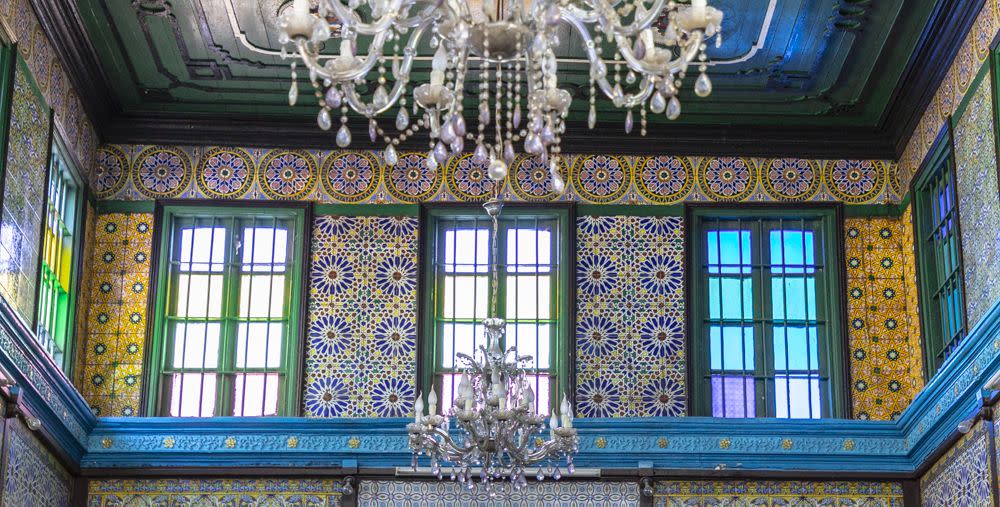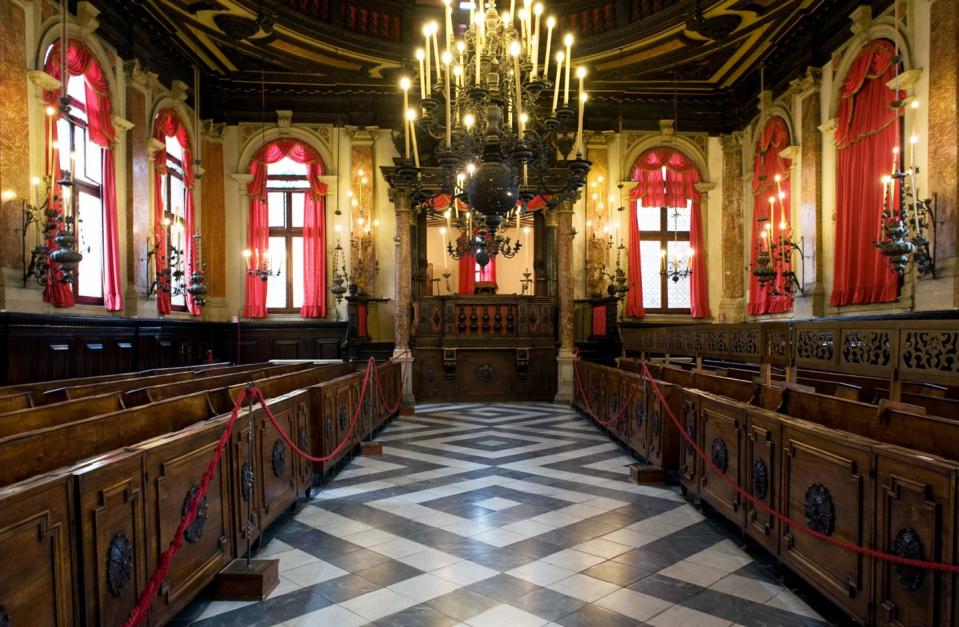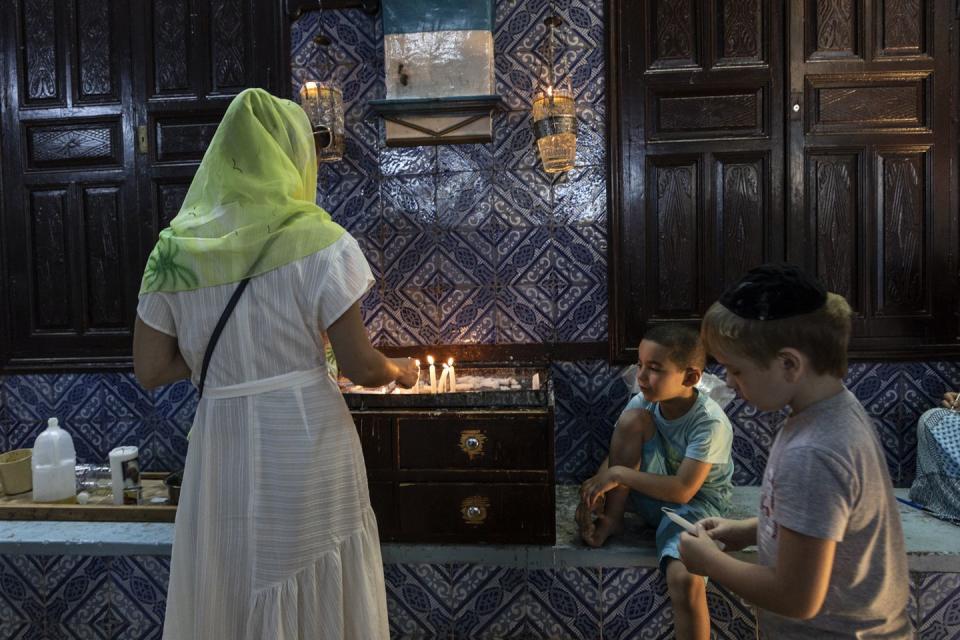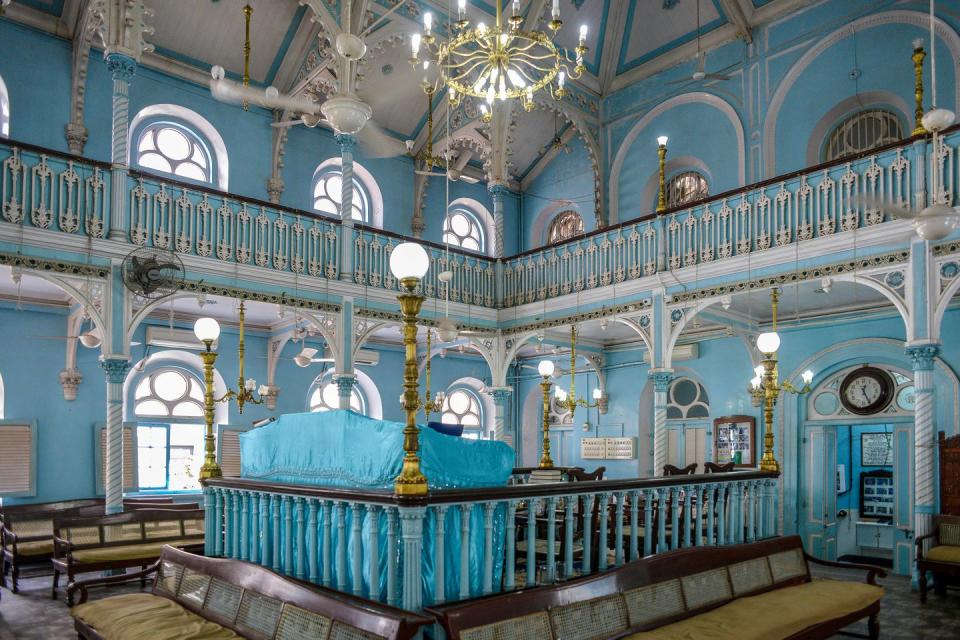Inside the World's Most Beautiful Synagogues

When it came to decorating, 40 years of wandering in the Sinai desert didn’t mean that Moses was off the hook. The mobile sanctuary and the furnishings he was commanded to create to house the Word of God, while awaiting entrance to the promised land, were divinely ordained and crafted by the most skilled artisans.
Generations of Jewish worshippers followed suit. Some of the world’s most spectacular synagogues were built by lesser-known Sephardi Jewish communities in Greece, North Africa, the Middle East, and Asia. (Sephardi Jews trace their roots back to pre-Inquisition Spain, Portugal, and the eastern Mediterranean, in contrast to Ashkenazi Jews, who came from Eastern Europe.)
But even the humblest synagogues were designed to reflect a heavenly reality. A centuries-old palm tree presides over the hidden courtyard at the entrance to Athens’s tiny, beautiful Etz Haim (“Tree of Life”), built in 1904 in the city’s Thission neighborhood. The Romaniote Jews who gather here are descended from Jewish communities whose presence stretches back more than 2,000 years. The majority of Romaniote Jews were murdered in the Shoah, and many who remain are now too fragile to mount the stone steps leading to the sanctuary. You’ll find them on the Sabbath just across the street, behind the austere facade of Beth Shalom synagogue, built in 1935 from gleaming, white Pentelic marble, like the Parthenon.
My own levels of religious observance have waxed and waned over the years, but I’ve always been drawn to synagogues as sites of both Jewish and collective memory. I remember searching the Venice ghetto for a dusty little piazza where, nestled on the upper floors of nondescript buildings, 16th-century synagogues dazzled like hidden jewels. Their aura of secrecy-mandated by Venetian law, which forbade any exterior sign for Jewish houses of worship-made them seem all the more precious. That’s also true for Venice’s largest synagogue, the still-functioning Scuola Spagnola. Said to have been founded by refugees from the Spanish Inquisition, it has a sober facade that conceals a Baroque fantasy of polychrome marble, red satin, and gilded wood, as if to say, “We Jews are part of Venice, and Venice is part of us.”

In fact, a brief survey of Sephardi synagogues reveals competing impulses: devotion to tradition vying with assimilationist inclinations. Perhaps that’s why the names of three Muslim caliphs and a Mamluk sultan are inscribed in Arabic on the chandeliers of Cairo’s Ben Ezra synagogue, where the mother of pearl–and-ivory mosaics are ornamented with both Islamic arabesques and Hebrew scripture. Legend claims that this ancient Jewish congregation was founded at the spot where baby Moses in a basket was fished from the reeds of the Nile. (Meanwhile, 19th-century historians discovered a treasure trove-a millennium’s worth of rare medieval manuscripts in Hebrew, Arabic, and Aramaic-sleeping in Ben Ezra’s attic.)
The Jewish presence on Djerba, an island off the Tunisian coast, also goes back a long way. No one knows for sure when Jews first arrived on the island. According to local lore, buried in the foundation of its magnificent blue-tiled El Ghriba synagogue are a stone and a door carried from Jerusalem by Hebrew priests fleeing the wreckage of the First or Second Temple. Many elderly Jews here still wear a piece of black cloth at the hem of their trousers, a sign of mourning for the ancient temple’s destruction.

The synagogue has been rebuilt many times; the current structure dates from the 19th century. The community, once numbering nearly 5,000 Jews, has now dwindled to about 900. Though they have long lived in relative harmony with their Muslim neighbors, in 2002, El Ghriba was the target of an Al Qaeda attack that left 21 dead. The damage has slowly been repaired.
Like other synagogues in remote Jewish enclaves, it endures as a fragile beacon of tolerance and devotion. And surely the desire to proclaim “We are here to stay” was partly what motivated Sir Jacob Sassoon, scion of an immensely wealthy Iraqi Jewish family, to construct Keneseth Eliyahoo, a powder-blue Classical Revival pile, smack in the middle of downtown Mumbai. Cast-iron vaults, stained-glass windows, Minton tile floors, and Burmese teak furnishings once greeted the elite among the huge Baghdadi Jewish community of Mumbai (30,000 strong at its height in the 1940s), many of whom lived nearby and packed it full on the High Holidays.

Keneseth Eliyahoo is still an Orthodox synagogue serving today’s much smaller community of Mumbai Jews (and is currently undergoing renovations). But in late afternoon, when the light falling through stained-glass windows casts multicolored shadows across the women’s balcony, you can almost hear the echo of long-ago conversations.
('You Might Also Like',)

